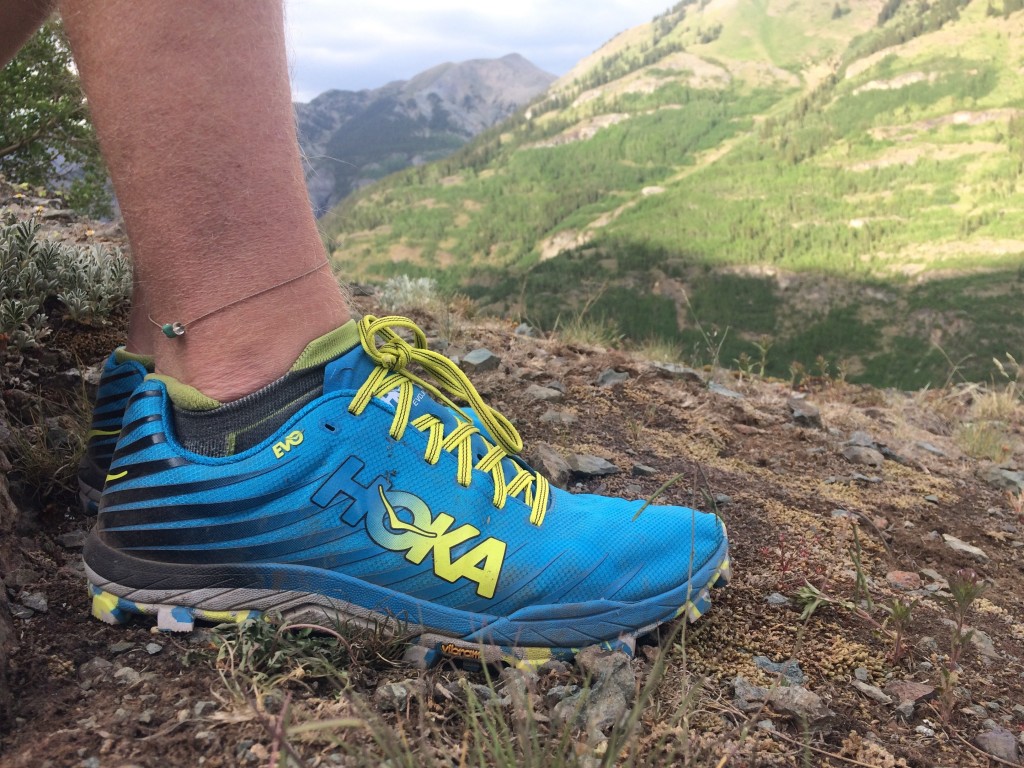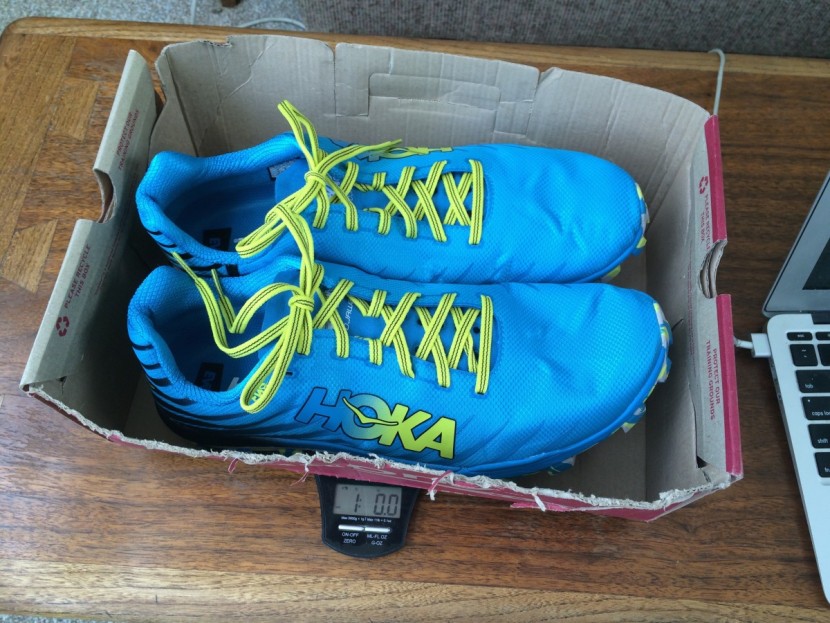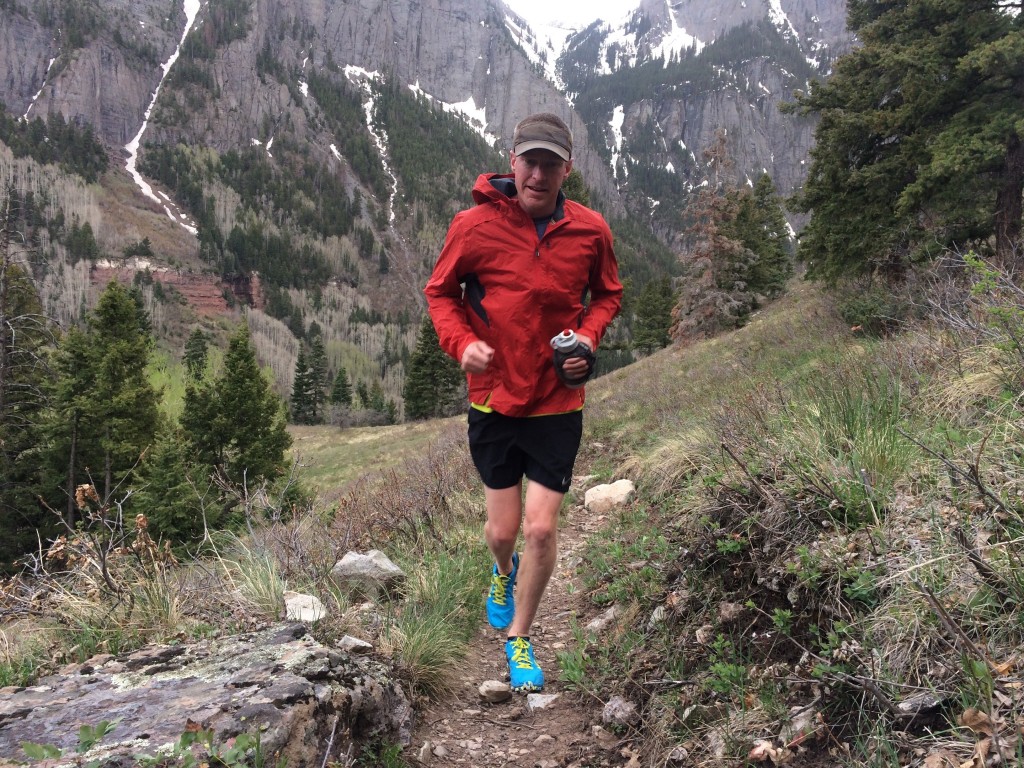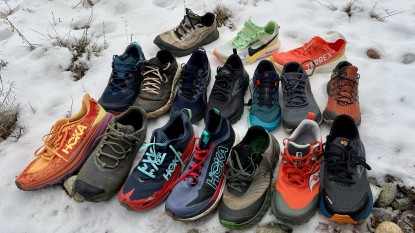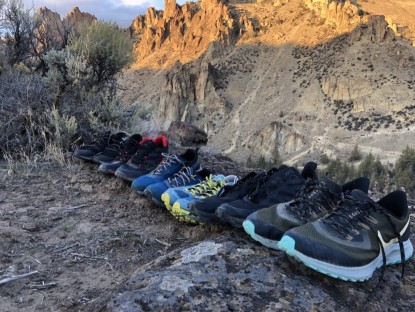Hoka Evo Jawz Review
Our Verdict
Our Analysis and Test Results
Since their inception, Hoka has really only made shoes with their signature thick layer of EVA foam padding underfoot. With the Evo Jawz they completely break that mold, succeeding in their first effort to produce a low-to-the-ground, lightweight shoe that is reminiscent of a racing flat. With a low 3mm heel-toe drop, only 20mm of underfoot foam cushioning, and sharp square lugs on the outsole, you may feel as if you have stepped into a pair of track shoes when you put them on. Unlike the high-mileage ultra machines that dominate Hoka's trail shoe lineup, we found this one to be best for short days at an increased tempo, and love how they thrive on off-trail terrain like steep mountains and sloppy mud.
Foot Protection
This shoe is one of the lowest scorers when it comes to foot protection, a major reason why we didn't take it out for many long runs. Like all Hokas, the midsole is made up of EVA foam and does not have any sort of rock plate to help absorb impacts from sharp objects. Unlike the the maximally cushioned Hoka Speedgoat 3, the Evo Jawz has a minimal amount of foam between your foot and the ground, a fact that will likely please Hoka's sponsored athletes but not the plethora of longtime Hoka faithful. This shoe is flexible and one can feel nearly any stone or pebble, no matter how small, when one lands on it. The toe bumper is nothing more than a tiny piece of outsole wrapped up over the toe, and likewise the upper itself is a single thin layer of fabric that offers little in the way of foot protection.
Traction
The outsole of this shoe is made with Vibram Megagrip compound and features many well spaced and super deep lugs that remind us of sports cleats. In our testing, these cleats did an amazing job gripping soft surfaces such as dirt, mud, alpine tundra, and even snow, but offer little in the way of surface area for sticking to rock. Since grip on rock is usually friction dependent, and more surface area means more friction, this wasn't actually a surprise to us. Like most Hokas, the sole of this shoe has many cut out areas where the underlying foam is exposed, but thankfully despite the cutouts, the rubber is all one solid piece, rather than many smaller glued on pieces that can tear off easily.
Stability
This shoe has roughly 20mm of underfoot stack height, which is pretty low to the ground in comparison to the other shoes in this review. We found we had very little propensity to roll an ankle when side-hilling in these shoes, and found them to be pretty darn stable overall. However, one minor complaint is that the shoe does not have a system in place to hug the foot firmly in place, beyond just the single layer upper material. As such we had a hard time securing a super snug fit, and our feet often slipped about just slightly, especially on steep hills.
Comfort
There is no arguing that this is a comfortable shoe with little to complain about. We found the fit to be a tad on the narrow side, similar to the way that the other Hokas are fitting these days. The length seemed about normal to us if not slightly short, so some people may need to consider sizing up half a size. The laces do a good job of hugging the foot quite tightly over the top, and the upper material is thin, minimally padded, and not super breathable. In our water bucket test, this model absorbs very little water, but also doesn't do a great job of quickly shedding the water that it does soak in. We also experienced a lot of color dye bleeding out of the shoe, staining the skin of our feet for a couple of days, even after showers. Other online reviewers have commented that the dye running has ruined light-colored socks, so beware of that!
Weight
At a mere 16.0 ounces per pair for size 11, these are far and away the lightest shoes in this review. For comparison, the next closest are the Altra Superior 4, which are three ounces heavier per pair. They feel really light while running, a huge bonus for those who really want to push the speed envelope.
Sensitivity
Besides weight, this shoe's strongest attribute is its sensitivity. It feels thin underfoot, but worth noting is that on even surfaces the very deep lugs add a fair amount of cushioning and spring to the stride. Only on uneven surfaces where objects land in between the lugs is the sensitivity especially noticed.
Value
These shoes retail for $130, making them rather expensive for a model with limited uses. They do perform well, so if their best uses fit your goals, they likely present good value. Most people, however, would be encouraged to look at more traditional trail running shoes.
Conclusion
The Hoka Evo Jawz is a unique, low drop, super light shoe that is remarkable for its extraordinary sensitivity and fantastic traction. It is one of the least protective shoes in this review and fits in the exact opposite end of the spectrum from nearly every other Hoka shoe we have ever seen. For those who want to run their fastest on gnarly and uneven terrain, we suggest you check them out.



